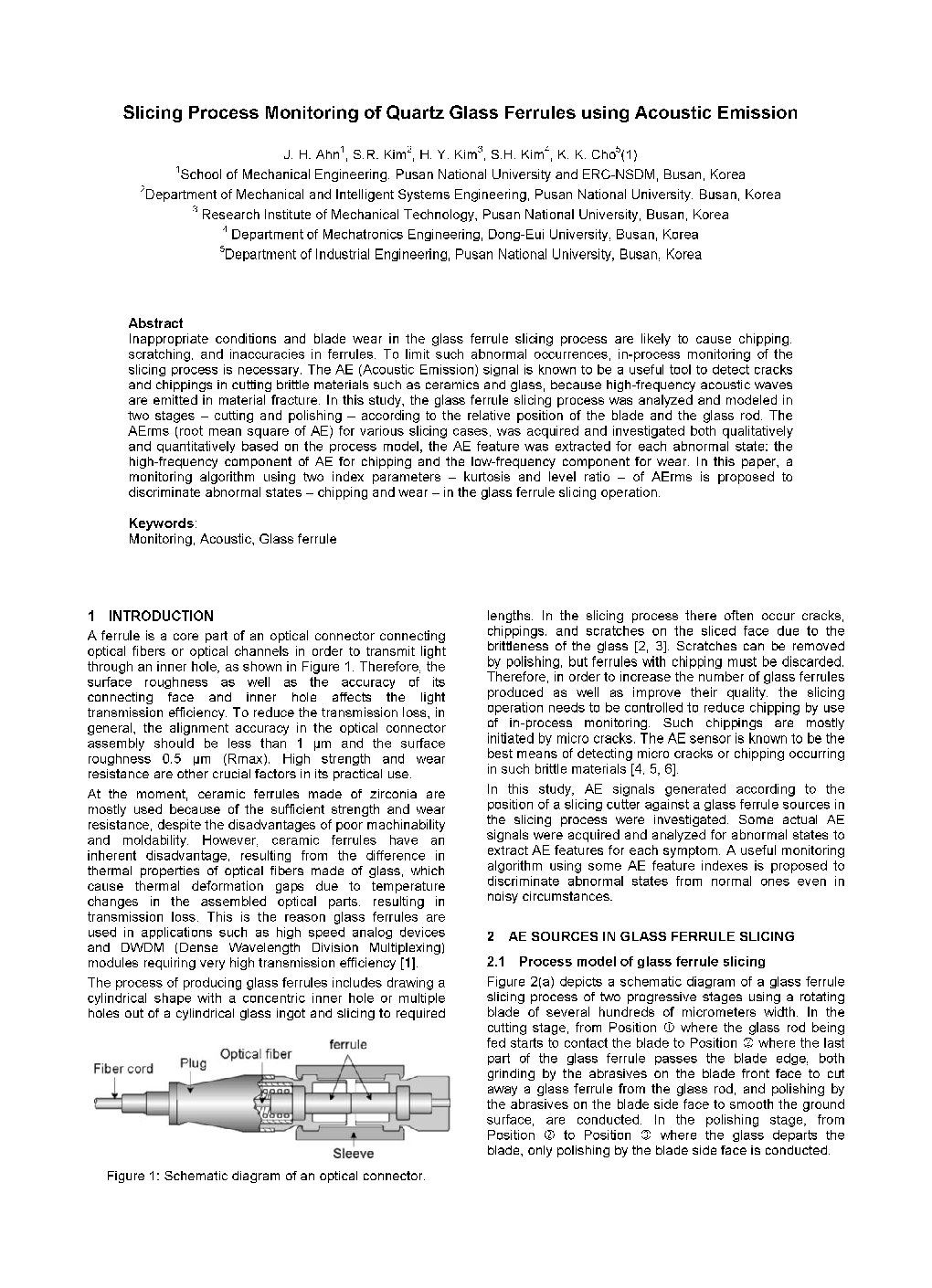| Article ID | Journal | Published Year | Pages | File Type |
|---|---|---|---|---|
| 10673703 | CIRP Annals - Manufacturing Technology | 2005 | 4 Pages |
Abstract
Inappropriate conditions and blade wear in the glass ferrule slicing process are likely to cause chipping, scratching, and inaccuracies in ferrules. To limit such abnormal occurrences, in-process monitoring of the slicing process is necessary. The AE (Acoustic Emission) signal is known to be a useful tool to detect cracks and chippings in cutting brittle materials such as ceramics and glass, because high-frequency acoustic waves are emitted in material fracture. In this study, the glass ferrule slicing process was analyzed and modeled in two stages - cutting and polishing - according to the relative position of the blade and the glass rod. The AErms (root mean square of AE) for various slicing cases, was acquired and investigated both qualitatively and quantitatively based on the process model, the AE feature was extracted for each abnormal state: the high-frequency component of AE for chipping and the low-frequency component for wear. In this paper, a monitoring algorithm using two index parameters - kurtosis and level ratio - of AErms is proposed to discriminate abnormal states - chipping and wear - in the glass ferrule slicing operation.
Keywords
Related Topics
Physical Sciences and Engineering
Engineering
Industrial and Manufacturing Engineering
Authors
J.H. Ahn, S.R. Kim, H.Y. Kim, S.H. Kim, K.K. Cho,
